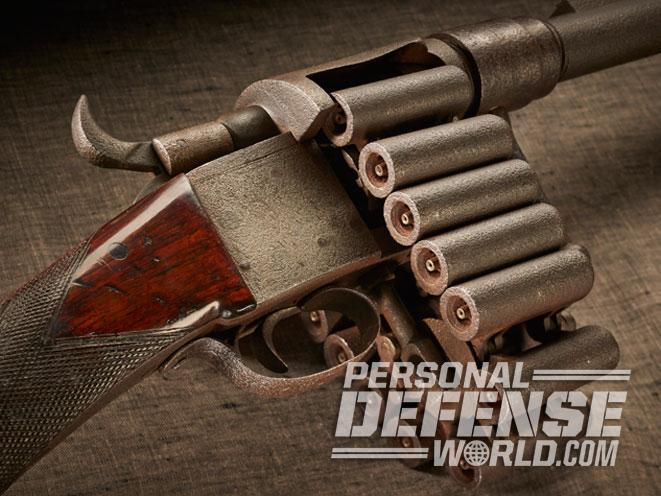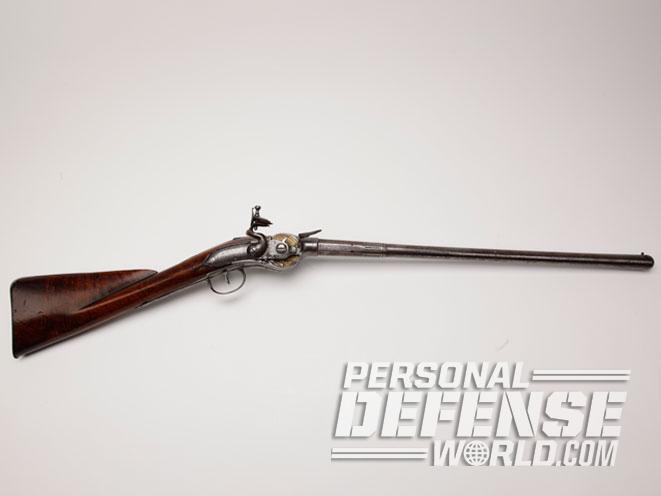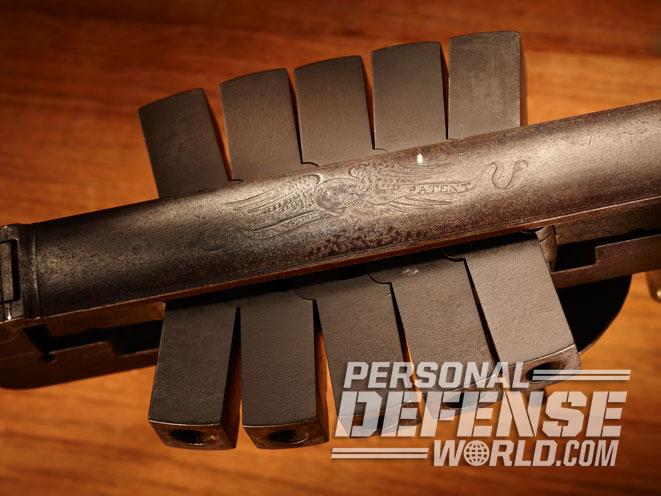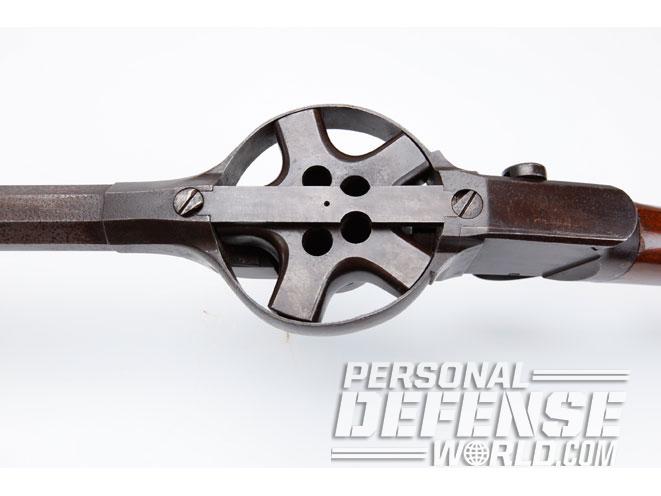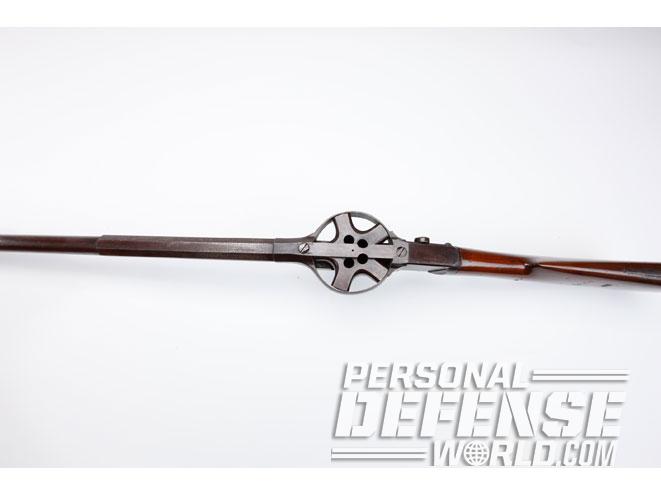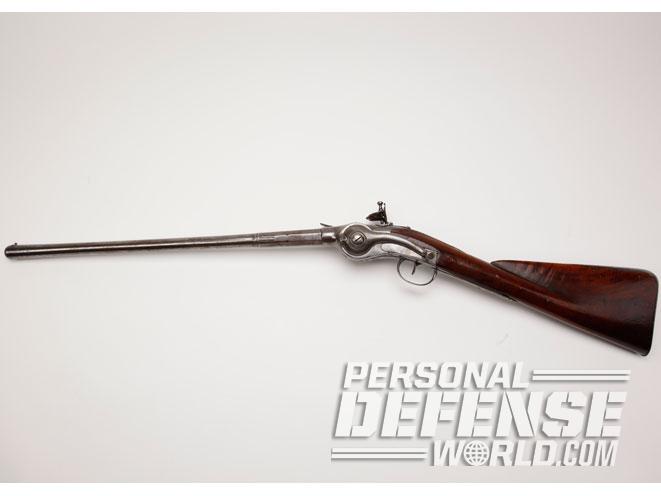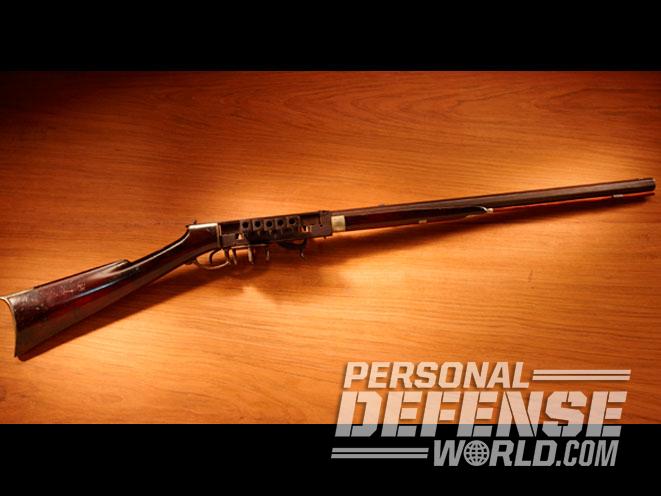Since the discovery of gunpowder in early China, all users of firearms have had one thing in common: the quest for more firepower. They were all looking
for a more effective way to harness the power of this chemical reaction.
While it is apparent that firearms of some kind or another have been used for hundreds of years, none of these were easy to reload. Firepower had taken a huge step forward with the introduction of these early arms, but they weren’t practical when it came to multiple shots.
Early on, the simple solution was to carry multiple firearms. A brace of pistols was a common remedy to the situation. Taking it a step further, sometimes an extra would be tucked in a boot or a vest pocket. Other solutions involved carrying multiple containers around your neck that contained additional charges and projectiles. While this worked and was, in theory, a simple solution, it was not a practical one.
Advertisement — Continue Reading Below
Carrying multiple firearms or additional quantities of powder and ball could be cumbersome. It was often heavy and took a while to reload—even if the necessary materials were hanging around your neck. Speed was not something that would come easily to guns. In fact, it would take hundreds of years to develop rapid firepower.
Shaw’s Take
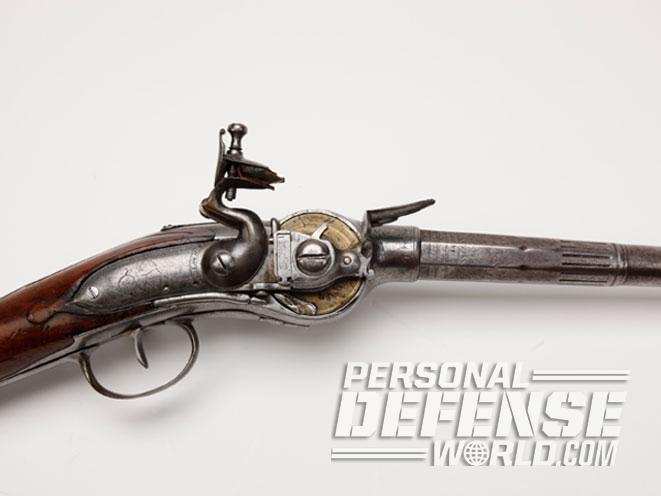
One unique design, John Shaw’s Cookson Volitional Repeater, was introduced in the late 18th century. A lever on the side of Shaw’s rifle was cranked to dispense powder and ball from a reservoir in the buttstock up into the chamber; this lever also cocked the hammer. This provided the shooter with a 12-shot, breech-loading repeater—virtually unheard of in the age of flintlocks. Because the powder was stored in the buttstock, the gun was also fairly waterproof.
Advertisement — Continue Reading Below
John Shaw reportedly wanted to show off the waterproof capabilities of the gun one day during a Boston thunderstorm in the 1770s. He fired three shots to great fanfare. Unfortunately, he was unable to get his fourth shot off before being struck and killed by lightning.
RELATED STORY: 13 Iconic Combat Handguns Throughout History
Shaw’s untimely demise illustrates the impact of media and marketing. No matter how revolutionary and amazing your product may be, if you’re killed while holding said product—even if it wasn’t because of the product—your sales are going to flatline. This was the case with Shaw’s rifle.
Advertisement — Continue Reading Below
It would take almost 100 years, until the time of the Civil War in the 1860s, for a reliable repeating firearm to break through the market. Until that point, you were considered a fast shot if you could get three well-aimed shots off in a minute from the standard muzzleloader of the day.
Other Early Designs
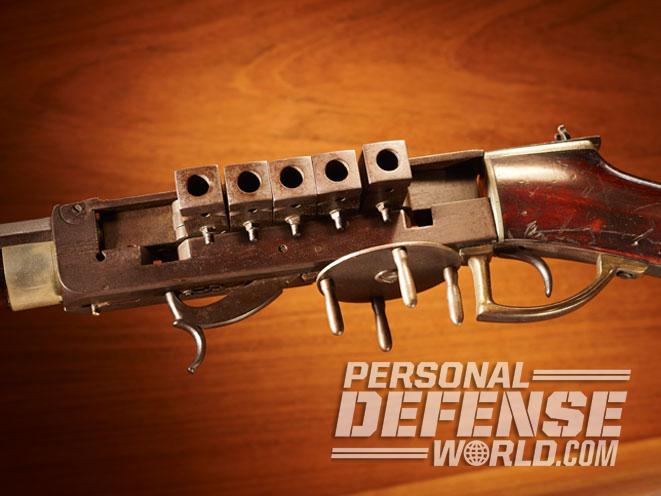
Epenetus Bennett and Frederick Haviland of Maine constructed a 12-shot, .40-caliber repeating rifle in 1838. The rectangular chambers were rotated by hand using a crank underneath the chambers. Only a dozen or so were ever manufactured because the design had the potential to be fatal in any direction. If it misfired, shots could be sent backward toward the shooter and to both sides, putting bystanders in harm’s way.
Advertisement — Continue Reading Below
In 1851, P.W. Porter patented a nine-shot repeating turret design, available both in pistol and rifle form. The turret on this gun is mounted vertically and is equipped with a side hammer. Movement of the triggerguard—which is similar in design to a lever action—cocked the hammer and rotated the cylinder. The main drawback of this design is that the turret sticks up above the top of the frame, obstructing the normal line of sight.
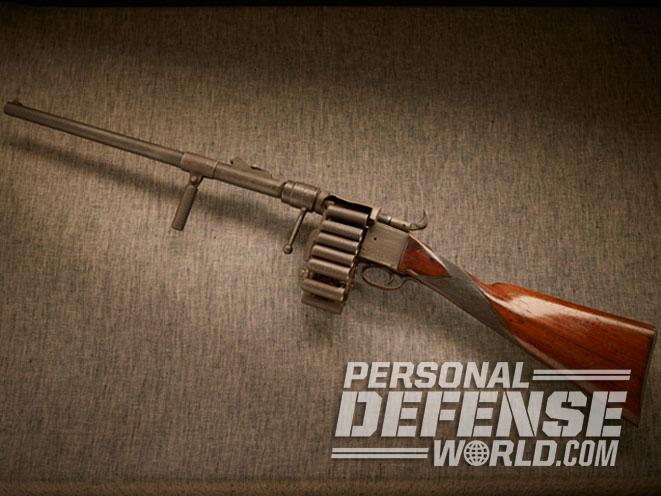
The Treeby chain gun, patented in England in 1855, had a 14-round chain magazine. While it was certainly more effective than a standard single-shot firearm, it was still slow to operate. The chain did not cycle automatically; the operator had to manually rotate it after each shot. Treeby approached the British military with his design, hoping it would become its next standard-issue firearm. It went through trials at the Hythe School of Musketry with a 30-round chain and discharged all 30 shots in less than a minute. Unfortunately, the gun did not fire a charge substantial enough to be used in the military, and it was never officially adopted.
RELATED STORY: The History and Legacy of the 1911 Pistol
Advertisement — Continue Reading Below
One of the other drawbacks to Treeby’s design was that the chain was not restrained at the bottom and could swing freely, potentially causing jams or other issues. To fix this problem, Treeby sought another patent in 1858 for a second sprocket at the bottom of the chain, held in place by straps on the frame, to prevent the chain from swinging.
In June of 1856, Alexander Hall patented a 15-shot revolving rifle. The cylinder was rotated by hand when the operator released the cylinder lock. Inside the triggerguard are two triggers; the front trigger cocks the hammer and the rear trigger fires the rifle. Most examples were chambered in .38 and .40 caliber, but one known example was made in .45 caliber. Hall himself was reportedly injured by a multiple discharge of the rifle when he was giving a test demonstration.
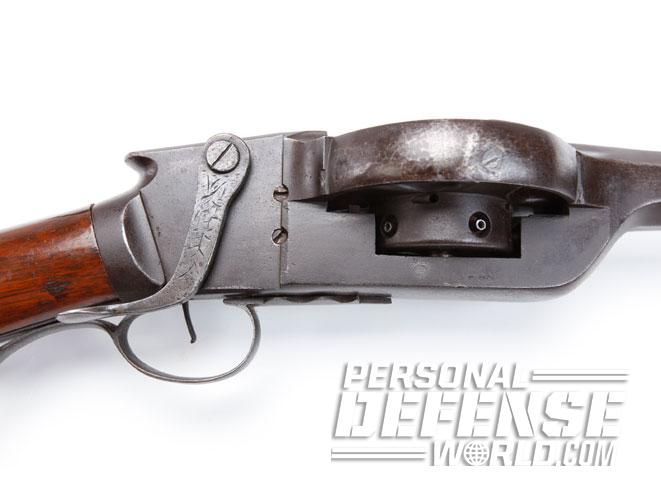
Edmund H. Graham of New Hampshire patented a unique five-shot rifle in September 1856. Avoiding the sight obstruction caused by the vertical turret in Porter’s design, Graham’s turret is mounted horizontally. A lever on the left side of the frame rotated the turret and cocked the hammer at the same time. Multi-shot percussion firearms such as Graham’s were prone to chain firing. That is, when one chamber ignites, it has a chain reaction and all of the others ignite as well. This was a very real and very dangerous problem that Graham sought to address with his five-shot rifle. In addition to separating the chambers by 72 degrees, it also had a cover plate that was intended to keep adjoining chambers from connecting.
Advertisement — Continue Reading Below
Lever Actions
All of the designs and failures mentioned here eventually allowed men like Benjamin Tyler Henry, Oliver Winchester, John Moses Browning and other inventors to improve on the designs that came before them. They were able to avoid the pitfalls of others and create a reliable repeater.
Henry, Winchester and Browning all adopted a lever-action design, similar to Porter’s 1851 creation, on their rifles. The Henry—known as “that damned Yankee rifle you load on Sunday and shoot all week”— was capable of firing 16 shots before reloading. Oliver Winchester’s iconic Model 1873 rifle was capable of holding more than 10 rounds, with the exact amount dependent upon the rifle’s caliber. Beginning in 1886, John Moses Browning lent his genius to their design improvement, which continued through the Model 1895.
Advertisement — Continue Reading Below
RELATED STORY: Top 12 Western Classics
One of the biggest advancements in repeating firepower came with the advent of the self-contained metallic cartridge. While early rimfire variants were available when Bennett and Haviland were designing their rifle in 1838, percussion technology still reigned supreme. Henry’s rifles fired .44-caliber rimfire cartridges in the 1860s. By 1873, however, Winchester’s repeating rifles were designed around new centerfire cartridges.
With these cartridge advancements, chains and turrets were no longer necessary to achieve repeating firepower. Loaded into tubular magazines and, later, box magazines, the age of the repeater had arrived.
Advertisement — Continue Reading Below
RELATED STORY: 8 Rimfire Replicas of History’s Greatest Battle Weapons
Today’s semi-automatic designs have the basic human desire to improve upon existing products to thank for their existence. If men like Shaw, Treeby and Hall hadn’t tried to create a reliable repeater, then the firearms technology we know today might not have been developed. Modern firearms designs exist solely because a group of individuals knew there had to be a better way. Through their efforts, modern designers are able to stand on the shoulders of those early firearms innovators.
The journey is far from over, though. As long as there are humans, the search for firepower and ways to improve it will certainly continue.
